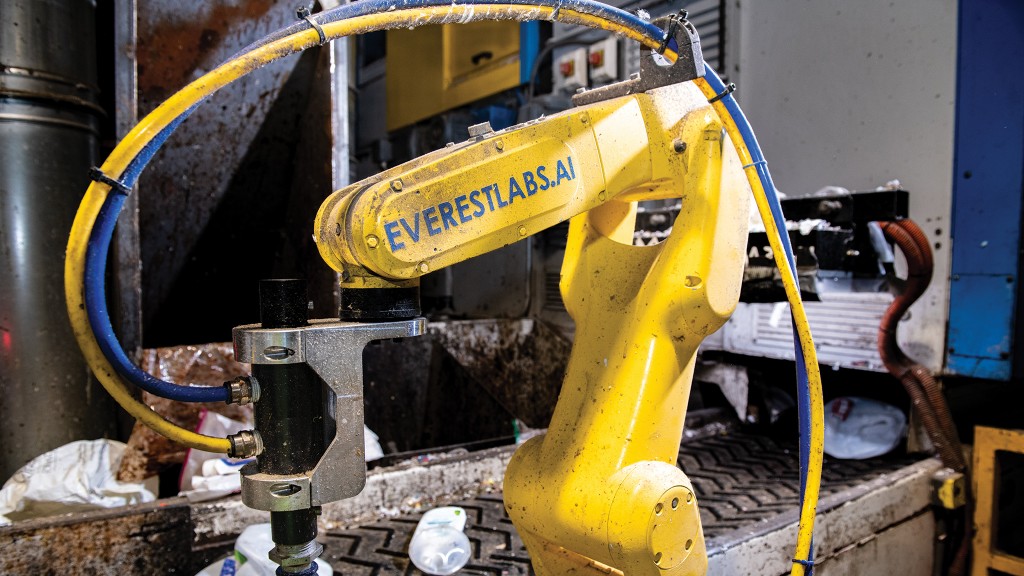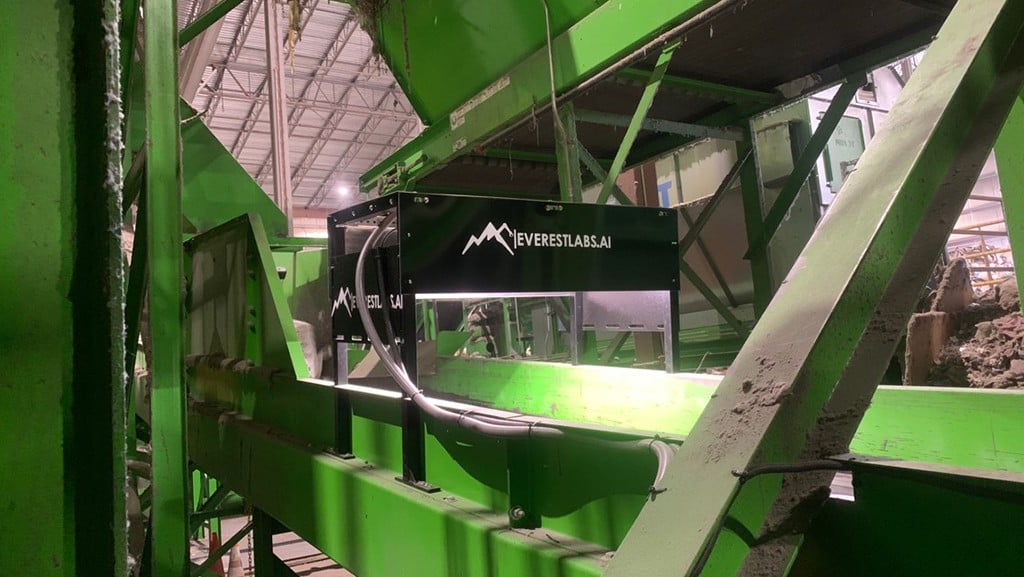How robotic sorters are redefining recycling
The pros, cons, and inner workings of sorting robots

The recycling industry has always grappled with a persistent challenge: how to efficiently sort and process vast amounts of recyclable materials with both accuracy and speed. As material volumes continue to surge, traditional sorting methods have struggled to keep up, leading to inefficiencies and contamination issues.
In an era of rapid technological advancement, robotic sorters have established their presence as a viable solution to these issues. Utilizing a blend of artificial intelligence (AI), computer vision, and automation, these systems have already begun to revolutionize the way we manage waste. From enhancing recycling and purity rates, to reducing contamination and manual labour, autonomous sorting systems are redefining the recycling process and paving the way for a more circular economy.
How do robotic sorters work?
At the heart of robotic sorting machines lies artificial intelligence, a vital component that gives the robots cognitive capabilities. Through machine learning algorithms, these AI-powered robots can recognize and differentiate between various recyclable materials with precision.
Computer vision technology acts as the eyes of the robotic sorter, allowing it to "see" and interpret information from objects on a conveyor belt. Equipped with cameras and sensors, robotic sorters capture real-time images of the recyclables which are then processed by AI algorithms. The AI algorithm is then able to identify the materials based on features such as shape, colour, and texture.
"AI models and frameworks need to be specifically optimized for the recycling environment because they need to be able to make inferences and command robotics within several milliseconds," says JD Ambati, CEO of EverestLabs. "For example, in addition to RecycleOS' robots, EverestLabs puts 3D depth-sensing cameras on recycling conveyor lines. The cameras can identify up to 200 items in each frame. Within 12 milliseconds, the AI software can tell what the objects are, what types of packaging they contain, and communicate with the robot to recover the item immediately."
The integration of sensors further enhances the robotic sorter's ability to evaluate recyclable materials beyond their visual features. The sorters are equipped with mechanical arms that pick items from a conveyor belt and sort them into different chutes based on the information provided by the AI and computer vision systems. The sensors can also measure features like size, density, and weight, enabling the robotic sorter to make more accurate sorting decisions.
One of the most significant advantages offered by robotic sorters is their adaptability. Deep learning, found on many robotic sorters, involves training neural networks to analyze data from the sensors and cameras, enabling the robots to make precise sorting decisions based on the object. Deep learning robots continuously learn and improve their sorting capabilities as they process numerous materials, leading to increased recycling rates and reduced contamination.
"With these considerations, AI data sets will continue to grow and become increasingly accurate, enabling a recycling facility to be able to identify many details about an object including the material, type of packaging, shape, volume, mass estimate, and more," says Ambati. "This operational data captured with AI is immensely helpful for facilities as they look to optimize their processes to comply with the ever-increasing accepted material list, government regulations, and achieve their overall sustainability goals."
The benefits and challenges of robotic sorting
The most noteworthy benefit of robotic sorting machines lies in their ability to automate and optimize the sorting process. With robotic sorting machines, recycling facilities can handle increasing volumes of waste more effectively. Traditional sorting methods rely heavily on manual labour, leading to challenges such as human error and higher processing costs. Robotic sorting systems, on the other hand, offer precision and speed, ensuring that recyclable materials are correctly identified and separated, significantly increasing recycling rates and purity. According to Ambati, robots can increase material recovery rates by up to 40 percent, therefore lowering labour and disposal costs by 40 to 60 percent.
"Hiring challenges, rising costs, a lack of operational data, and pending government regulations are paramount issues. AI and robotic solutions alleviate these challenges and help recyclers meet higher recovery and purity standards by optimizing a facility's recycling program and immediately improving recovery rates to achieve their circularity goals."
Beyond this, the integration of robotic sorting technology also minimizes the physical strain on workers. By automating physically demanding or hazardous tasks, robotic sorters help create a safer working environment for employees, minimizing the risk of injuries associated with repetitive motions and sharp or harmful materials. While human involvement remains necessary for certain tasks, automating the sorting process means that employees can focus on more specialized roles.
Another advantage is that robotic sorters can operate 24/7 without fatigue, resulting in continuous sorting. Robotic sorters handle larger volumes of materials at a faster pace compared to manual sorting, and generate vast amounts of data while doing it. This information provides valuable insights into recycling patterns and waste stream composition that can then be used to optimize operations and make informed business decisions.
However, like any innovation, robotic sorting also faces challenges. Robotic sorting technology requires a substantial upfront investment, including the cost of purchasing and integrating the robotic systems, sensors, and AI software, along with training workers to operate them. This can be a significant barrier for some recycling facilities, particularly smaller ones with limited budgets.
The complexity of robotic sorters also requires specialized technical expertise for setup and maintenance, adding to the overall operating costs. Rapid advancements in technology have also led to concerns about the obsolescence of robotic sorters, potentially requiring costly upgrades or replacements in the future.
While robotic sorters excel at recognizing common recyclable materials, they may also struggle with unconventional items, leading to the need for manual sorting in certain cases. Rapid shifts in the recycling stream or the introduction of new materials may challenge the adaptability of these sorters, so striking a balance between automated sorting and human involvement remains crucial to ensure optimal efficiency and adaptability in the face of ever-changing waste streams.
Despite these challenges, the promise of robotic sorting technology in improving the recycling industry is undeniable. As advancements continue and costs decrease, it's increasingly likely that these sorting systems will become a staple in recycling facilities worldwide, ushering in a new era of sustainability.
Will robots replace human workers?
The introduction of robotic sorters for recycling has a significant impact on human workers in recycling facilities. While these technologies bring a myriad of benefits, they also raise concerns about potential job displacement and changes in the work environment. The fear of job displacement is not just unique to the recycling industry, as concerns continue to grow regarding the broader impact of technological advancements and AI on employment.
Notably, the integration of robotic sorters can create new job roles and opportunities for human workers, in addition to being a helpful tool in addressing the current labour shortage. As these automated systems handle repetitive tasks, human workers can pivot to focus on more specialized and complex responsibilities that require creativity, problem-solving skills, and critical thinking - things that are not easily accomplished by most robots.
For instance, workers can be trained to operate and maintain robotic sorters, oversee the sorting process, and conduct quality control checks to ensure the accuracy of the sorting process. Upskilling programs can also equip workers with the technical expertise required to work alongside robotic sorters, enhancing their career prospects and employability.
The integration of robotic sorters – and artificial intelligence in general – continues to raise ethical considerations surrounding job security. Policymakers will need to address concerns about potential job losses as a result of these types of technologies by developing policies that prioritize worker welfare and protect their rights.
However, one undeniable benefit of robotic sorters is their contribution to occupational safety. By automating physically demanding and potentially hazardous tasks, the risk of injuries associated with repetitive motions and exposure to harmful materials is significantly reduced. This shift toward a safer working environment ensures the well-being and health of employees for years to come.
"The adoption of robotics systems by recycling facilities will not eliminate jobs, rather it enables human workers to move up to less dangerous and more valuable positions to manage operations support and analyze the data and insights that are generated to help make more informed decisions," explains Ambati. "There are several areas in a facility, like residue lines, where it's just too difficult to place human sorters. Robotics addresses this problem."
While concerns about job displacement are valid, the collaborative integration of robotic sorters and human workers presents opportunities for upskilling, improved job satisfaction, and a safer working environment. By embracing this technology and addressing the associated challenges, the recycling industry can optimize the potential of robotic sorters while ensuring the well-being of its human workforce.



